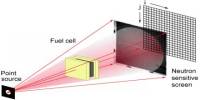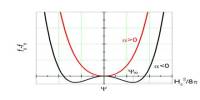Clouds are usually grouped into different types based on their altitude (how high they are in the sky) and their shape. There are ten cloud shapes that fall into four major altitude groups.
High clouds are just what they sound like clouds that are at high altitudes. These usually form about 6,000 meters in the sky. There are three types of high clouds, all containing the word ‘cirrus.’ The word ‘cirrus’ means ‘wispy hair’ in Latin, and these clouds definitely live up to their name.
Cirrus clouds are thin and wispy, sometimes called ‘horsetail’ clouds. Cirrocumulus clouds are the big, puffy clouds that look like a big head of curly hair. Cirrostratus clouds are like big sheets of thin clouds covering the sky, and this makes sense because the word ‘stratus’ means ‘sheet-like.’ So this last type of cloud is a big, wispy sheet in the sky.
Middle clouds are clouds at mid-level altitudes. Usually found between 2,000 and 6,000 meters, middle clouds get the prefix ‘alto’ because alto means ‘middle.’ There are two types of middle clouds. Altostratuses have the word ‘stratus’ in them, so we know these are large sheets of clouds. They are gray in color, cover the entire sky, and are often so thick that they disrupt sunlight coming into the ground so much that shadows aren’t produced on the ground. These usually form before a storm.
Altocumulus are like the cirrocumulus in that they are puffy (note that same suffix ‘cumulus’), but these are very dark in color and tend to form puffy masses in parallel bands across the sky.
Low clouds are clouds at low altitude, usually below 2,000 meters. There are three types of low clouds, all called ‘stratus.’ Stratocumulus is also low and gray, but since they have the word ‘cumulus’ in them, this means that they have a bit more shape to them. These are lumpy layers across the sky, though they rarely produce rain. Nimbostratus clouds are the ones that make you want to just stay inside all day. They are dark and wet looking, and often produce a decent amount of rain.
Finally, we have vertical clouds, which are clouds that form vertically instead of horizontally. There are two types of vertical clouds, cumulus, and cumulonimbus. Since they both have the word ‘cumulus’ in them, we know that they are both big, fluffy clouds. Cumulus clouds are the ones you can see shapes in when you look up at them in the sky. Cumulonimbus clouds often turn into thunderheads, which is when a cloud develops into a thunderstorm.
A mass of ice crystals or water drops suspended in the atmospherebl is known as a cloud. It is formed when the water condenses in the sky. The sky always possesses some amount of water vapors in it but it is invisible to us. Clouds are formed when an area of air becomes cooler until the water vapor there condenses to liquid form. At this point, the air is said to be saturated with water vapors. The result is clouded, which contain billions upon billions of water droplets or ice crystals, taking different shapes and sizes depending on where the cloud is formed. The moisture in the clouds will come back to the earth as rain or some other type of precipitation. Parts of the earth that have more water have more clouds because there is more water vapor. Places like the desert don’t usually have a lot of clouds.
- Orographic uplift – This type of uplift occurs when air is forced to rise, then cool down. If the cooling process is successful, then the water vapor turns into clouds and precipitation. Orographic lifting can trigger amplified amounts of precipitation and widespread cloudiness on higher ground.
- Convectional uplifting – Convectional uplifting happens when the surface of the air is heated at the ground. Then the mass of the air should be warmer in the air that encloses it. After that, it will begin to rise and cool. When this is successful, a cloud forms, due to saturation.
- Frontal Uplifting – This type of uplift is also known as a Convergence. It occurs when two masses of air converge. Usually, the two masses of air are opposite temperatures and moistness. For example, one air mass is hot and moist while the other air mass is cool and dry. Then the cool air mass would act as a vertical wall and the warm air mass would use the wall to rise and form clouds, and also the warm air mass cools down during that process.
- Radioactive Cooling – Radioactive cooling takes place at night when the sun is no longer shining an providing the surface of the ground with energy. So the surface of the earth starts to lose energy and the air above the surface begins to cool. Then surface fog begins to form as a result.
Cloud Formation Experiment –
Objective:
The main objective of this experiment is to focus on the formation of clouds by making use of a few household materials.
Materials –
- Droppers
- Blue Food Colors
- A clear Jar
- Shaving Cream
- A container of water
Procedure:
- Take a small jar or a cup. Fill the water up to three-fourths of the way.
- Add shaving cream at the top.
- Wait until the shaving cream settles fully at the top of the water.
- Now take a separate bowl, add few drops of food coloring along with a few drops of water.
- Add it to a dropper or pipettes.
- Now actual experiment begins.
- Using these droppers just drop the colors on the cloud.
Result: Now one could witness the cloud formation. Once the cloud is filled with water it would start to rain.
Clouds are nothing but masses of condensed water vapors and they show visible signs of atmospheric processes at work. Cloud’s regulate the energy balance of the earth by absorbing infrared radiations and scattering solar radiation. In addition to this, clouds redistribute surplus energy from the equator to the poles and return water to the oceans and landmasses.
Information Sources:
















